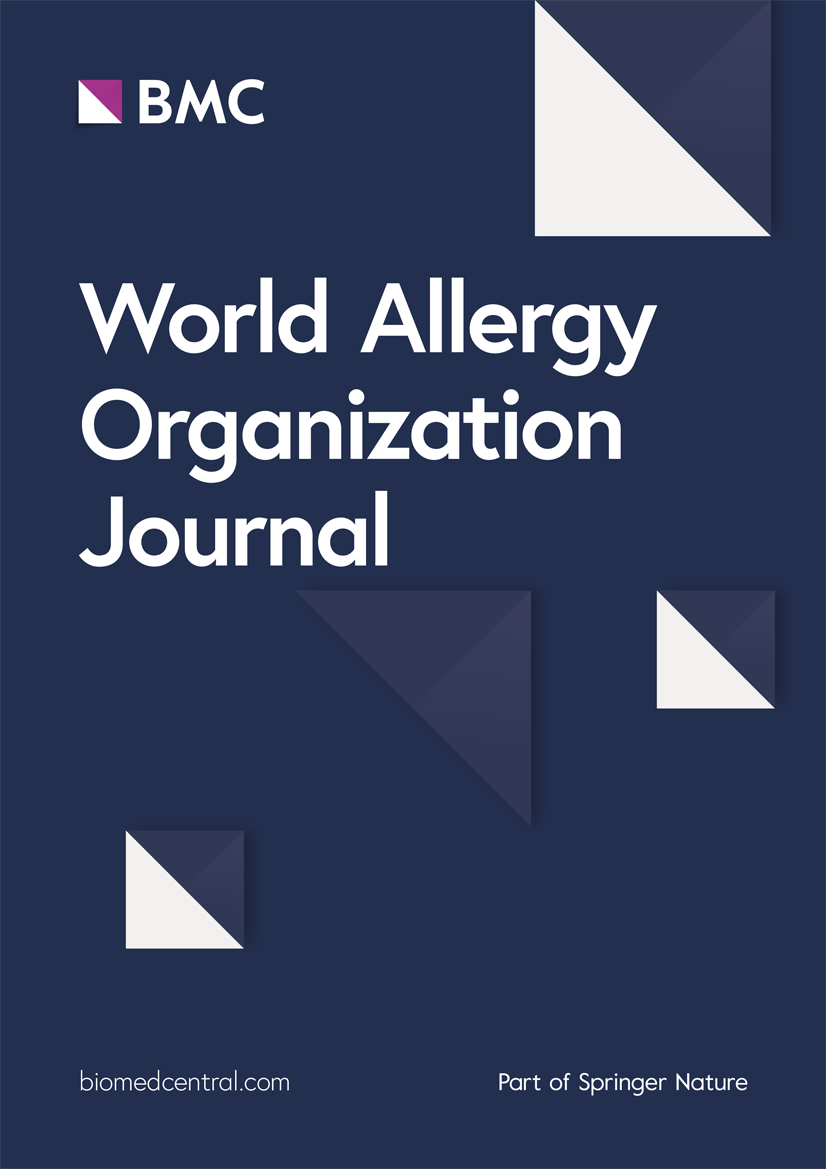Impact of hereditary angioedema attacks on health-related quality of life and work productivity
IF 4.3
2区 医学
Q2 ALLERGY
引用次数: 0
Abstract
Background
Hereditary angioedema (HAE) negatively impacts health-related quality of life (HRQoL). Few studies have characterized impairments to HRQoL, work productivity, and well-being during and following HAE attacks.
Methods
Patients with ≥1 HAE attack in the previous 3 months were recruited by the United States (US) HAE Association (HAEA) to complete an online survey. Respondents were categorized into those who did (Treated Cohort) and did not (Untreated Cohort) manage their last attack with on-demand treatment (OD). Adapted versions of the EuroQol–Five Dimensions–Five Levels (EQ-5D-5L), EuroQol Visual Analogue Scale (EQ VAS), and Work Productivity and Activity Impairment–General Health assessments were used.
Results
Attacks negatively impacted HRQoL and social and physical aspects of well-being in the Treated (N = 94) and Untreated (N = 20) Cohorts. In the Treated Cohort, mean EQ-5D-5L index score was 0.849 “Today” and 0.568 “During the last treated attack,” with the latter score indicating substantial impairment in HRQoL. Mean EQ-5D-5L index scores trended lower as time to OD increased, with mean scores of 0.667 for those treating <1 h and 0.593-0.504 for those treating ≥1 to <8 h from attack onset. The percentage of patients with mild attacks decreased as time to OD increased (from 50% for those treating <1 h to 17–33% for those treating ≥1 h from attack onset), and mean EQ-5D-5L index scores decreased as attack severity increased (mild, 0.742; severe, 0.444). Generally, mean EQ VAS scores decreased as time to OD increased, from 60.1 in those treating <1 h to 53.3 in those treating ≥8 h from attack onset. In the week following attack onset, average levels of absenteeism, presenteeism, and overall work impairment were 15%, 35%, and 39%, respectively. Despite attacks being of milder severity, declines in HRQoL (mean EQ-5D-5L and EQ VAS scores “During the last attack”: 0.661 and 73.0, respectively) and impairments in work productivity (mean level of absenteeism, presenteeism, and overall work impairment: 12%, 32%, and 36%, respectively) were also observed in the Untreated Cohort.
Conclusions
Late-treated and untreated attacks were associated with reduced HRQoL and work productivity, driven by attack severity. The negative impact of attacks may be reduced by increasing compliance with HAE guidelines (ie, consider OD for all attacks and treat as soon as possible), and by addressing barriers to OD in general and early treatment in particular.
遗传性血管性水肿发作对健康相关生活质量和工作效率的影响
背景:遗传性血管性水肿(HAE)对健康相关生活质量(HRQoL)有负面影响。很少有研究表明,在HAE发作期间和发作后,HRQoL、工作效率和幸福感受到损害。方法由美国HAE协会(HAEA)招募3个月内≥1次HAE发作的患者完成在线调查。受访者被分为有(治疗组)和没有(未治疗组)管理按需治疗(OD)的最后一次攻击的人。采用EuroQol五维度五水平(EQ- 5d - 5l)、EuroQol视觉模拟量表(EQ VAS)和工作效率和活动障碍-一般健康评估的改编版本。结果:在治疗组(N = 94)和未治疗组(N = 20)中,攻击对HRQoL以及社会和身体健康方面产生了负面影响。在接受治疗的队列中,EQ-5D-5L指数平均得分为0.849“今天”和0.568“在最后一次治疗发作期间”,后者的得分表明HRQoL明显受损。EQ-5D-5L平均评分随发病时间的延长而降低,治疗时间为1 h的平均评分为0.667,治疗时间≥1 ~ 8 h的平均评分为0.593 ~ 0.504。轻度发作的患者百分比随着发作时间的增加而下降(从治疗1 h的50%到治疗≥1 h的17-33%),平均EQ-5D-5L指数得分随着发作严重程度的增加而下降(轻度,0.742;严重,0.444)。一般情况下,EQ VAS平均评分随着时间的延长而下降,从治疗1 h的60.1到治疗≥8 h的53.3。在发作后一周,旷工率、出勤率和整体工作损伤的平均水平分别为15%、35%和39%。尽管发作的严重程度较轻,但在未经治疗的队列中也观察到HRQoL的下降(EQ- 5d - 5l和EQ VAS“最后一次发作期间”的平均评分分别为0.661和73.0)和工作效率的损害(旷工、出勤和总体工作损害的平均水平分别为12%、32%和36%)。结论经治疗和未治疗的发作均与HRQoL和工作效率降低相关,与发作严重程度有关。通过加强对HAE指南的遵守(即,考虑所有发作的用药过量并尽快治疗),以及通过解决一般的用药过量障碍,特别是早期治疗,可以减少发作的负面影响。
本文章由计算机程序翻译,如有差异,请以英文原文为准。
求助全文
约1分钟内获得全文
求助全文
来源期刊

World Allergy Organization Journal
Immunology and Microbiology-Immunology
CiteScore
9.10
自引率
5.90%
发文量
91
审稿时长
9 weeks
期刊介绍:
The official pubication of the World Allergy Organization, the World Allergy Organization Journal (WAOjournal) publishes original mechanistic, translational, and clinical research on the topics of allergy, asthma, anaphylaxis, and clincial immunology, as well as reviews, guidelines, and position papers that contribute to the improvement of patient care. WAOjournal publishes research on the growth of allergy prevalence within the scope of single countries, country comparisons, and practical global issues and regulations, or threats to the allergy specialty. The Journal invites the submissions of all authors interested in publishing on current global problems in allergy, asthma, anaphylaxis, and immunology. Of particular interest are the immunological consequences of climate change and the subsequent systematic transformations in food habits and their consequences for the allergy/immunology discipline.
 求助内容:
求助内容: 应助结果提醒方式:
应助结果提醒方式:


